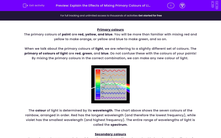Primary colours
The primary colours of paint are red, yellow, and blue. You will be more than familiar with mixing red and yellow to make orange, or yellow and blue to make green, and so on.
When we talk about the primary colours of light, we are referring to a slightly different set of colours. The primary of colours of light are red, green, and blue. Do not confuse these with the colours of your paints! By mixing the primary colours in the correct combination, we can make any new colour of light.
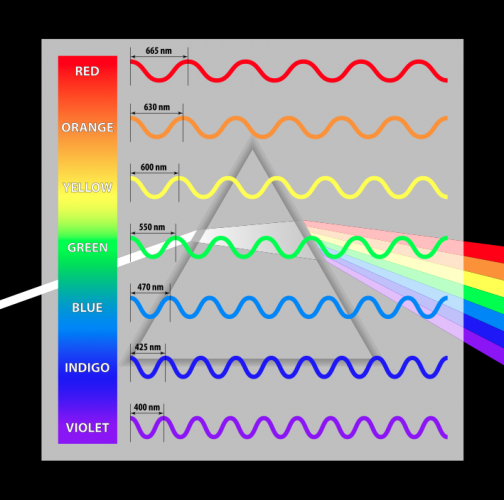
The colour of light is determined by its wavelength. The chart above shows the seven colours of the rainbow, arranged in order. Red has the longest wavelength (and therefore the lowest frequency), while violet has the smallest wavelength (and highest frequency). The entire range of wavelengths of light is called the spectrum.
Secondary colours
Secondary colours are made by mixing primary colours. The colour wheel below shows the effects of mixing each primary colour of light:
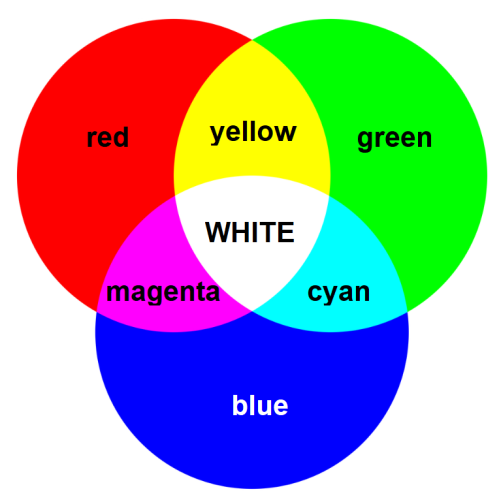
The three secondary colours of light are yellow, cyan, and magenta. Yellow is made by mixing red and green; magenta is a pink/purple colour made by mixing red and blue; and cyan is a bright shade of turquoise made by mixing blue and green.
If you mix all three primary colours, you make white light.
Filters
Finally, let's look at the effect of filters. A filter is something that can absorb particular colours of light, only allowing a certain colour to shine through. This can change the appearance of an object when seen through it.
Here are some examples:
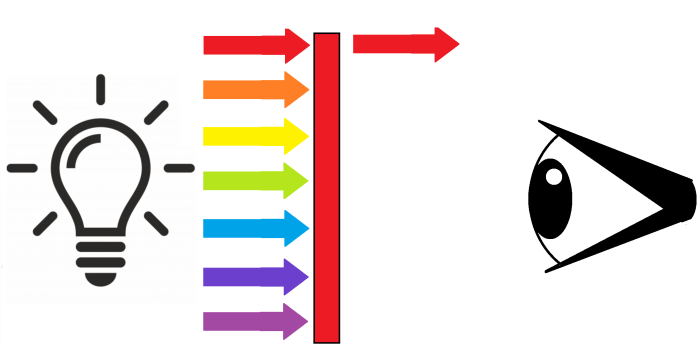
This red filter will only allow red light to shine through. This is because it absorbs all the other colours of the spectrum. Any source of light that contains red light will only appear red when viewed through the filter.
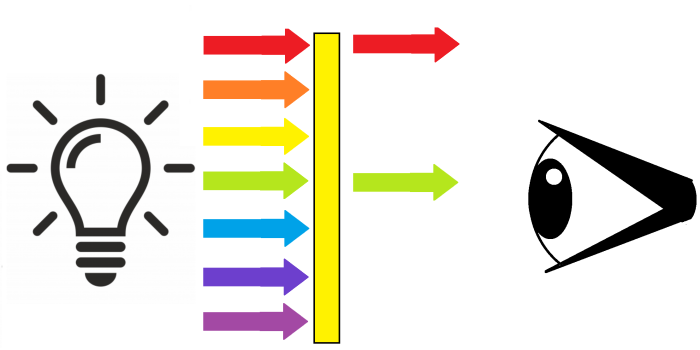
This is a yellow filter. As yellow is a secondary colour, it is letting its two primary colours through, which are green and red.
Viewing an object through a filter
Filters can make objects appear to be a different colour. Here are some examples:
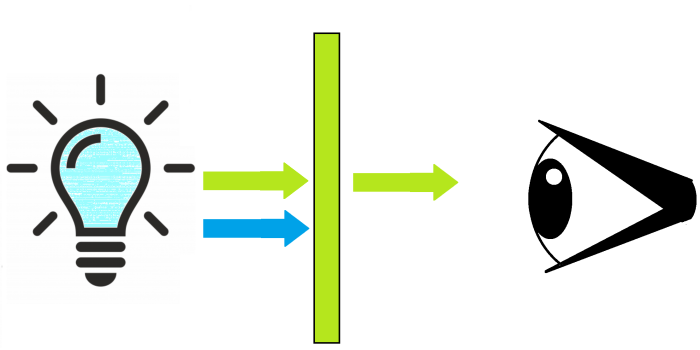
This cyan light is emitting blue and green light. Placing a green filter between the object and your eyes means that the blue light is absorbed before it reaches you, and so the light appears to be green instead.
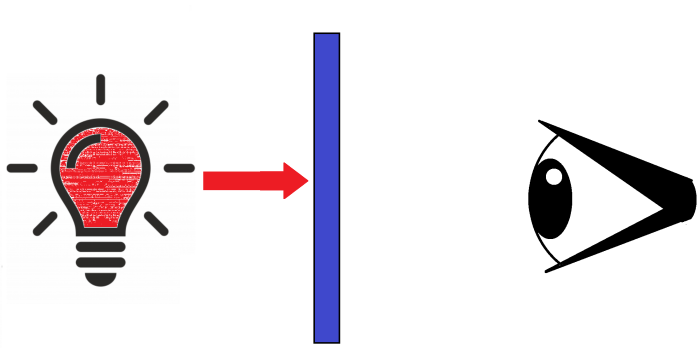
If you put a blue filter in the way of a source of red light, then the red light is absorbed, and no light can reach your eyes.
Any filter that absorbs all the colours that an object is reflecting or emitting will appear black.
Let's try some questions now.

